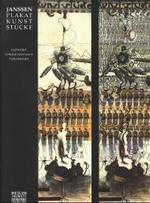- ホーム
- > 洋書
- > ドイツ書
- > Mathematics, Sciences & Technology
- > Technology
- > heat engineering, energy engineering, nuclear engineering
Full Description
This book describes how a parabolic trough solar collector (PTSC) is capable of regenerating rotary desiccant wheel very easily in the pursuit of reducing indoor air pollution. It stresses experimentation on composite rotary desiccant wheels to dehumidify and regenerate. In this volume, regeneration rate and adsorption rate of rotary desiccant wheel for generating dry air is evaluated experimentally. An experimental study on PTSC for checking regeneration feasibility of silica gel rotary desiccant wheel and composite rotary desiccant wheels (90% silica gel-10% molecular sieves, 90% silica gel-10% LiCl and 80% silica gel-10% LiCl-10% molecular sieves) is performed. The adsorption and the regeneration rates at various air flow rate, various rotational speed of rotary desiccant wheel, in parallel flow arrangement and counter flow arrangement, at same and different sector angle of process and regeneration sides are verified. Various combinations of regeneration/process (R/P) ratios for the silica gel rotary desiccant wheel and composite rotary desiccant wheel, as well as wheel effectiveness for adsorption sector and for regeneration sector, are also studied. Ultimately, experimental results of silica gel rotary desiccant wheel are validated with the help of simulation results. The experimental results and simulation results of silica gel rotary desiccant wheel were analyzed and compared for different wheel speed, counter flow arrangement, same and different sector angle and different R/P ratio. From comparison of simulation and experimental results of silica gel rotary desiccant wheel at various parameters like process air inlet and outlet temperature, process air inlet and outlet humidity ratio, regeneration air inlet and outlet temperature, humidity ratio of regeneration air at inlet and outlet, it has been observed that there is good match between experimental and simulation results. The volume includes of the following sub-sections:-Potential biodegradable materials for binder and binder-based materials,
-Effect of biodegradable materials on fresh and hydration of construction materials,
-Strength gain in hardened formaldehyde-free binder based materials containing biodegradable binder,
-Durability of formaldehyde-free binder based materials,
-Inner-structure analysis of formaldehyde-free binder based materials.
Contents
Chapter 1. Starch based compound for eco-friendly and sustainable construction adhesive and binder system.- Chapter 2. Self-compacting composite containing mine tailing and fortified by nanocarbon dot for manufacturing of cost-effective and CO2-neutral material in construction and infrastructure.- Chapter 3. Valorization of nano carbon dot based green binder systems in terms of earthquake engineering, reinforced concrete building, applied mechanics, transportation engineering, and their applications.- Chapter 4. Some technological properties of hydraulic construction lime and grouting incorporated with carbon nano tube fiber chopped for manufacturing of cost-effective and CO2-neutral material in cleaner built environment.- Chapter 5: Transforming oil sand waste ash into construction material using net-zero energy.- Chapter6. Properties of biodegradable fiber-incorporated-grouting retrofitted by graphene mac carbon nanomaterial for cleaner built environment.- Chapter 7. Ecological-sustainable-green brick material: unfired manufacturing system, some features, and usage for greener built environment and construction technology.- Chapter 8: Potential use of recycled concrete aggregate and recycled asphalt pavement aggregate in the silica fume-incorporated-roller compacted concrete strengthened by carbon nanograin.- Chapter 9: High-performance concrete made of seawater and cured in seawater to evaluate hydration composition and porosity with analysis of SEM, petrography, and mercury porosimetry in the lack of fresh water of cleaner built environment.- Chapter 10: Portland cement and starch-based adhesives: a comprehensive review.- Chapter 11: Additive for sustainable adhesive material- properties of eggshell additive and its application in construction and nanotechnology.- Chapter 12: Behavior of Bacterial Strain over Cementless Geopolymer Concrete for Sustainable Development.- Chapter 13: Geopolymer Bricks using Industrial Wastes to reduce CO2 Foot print.- Chapter 14: Natural rubber latex-substituted-bitumen binder for road construction -a review.- Chapter 15: Agro-industrial supplementary cementitious materials for realizing Sustainable Development Goals of UN and net-zero CO2 emission.- Chapter 16: Natural rubber latex and its effects on some properties of bitumen for cleaner built environment.- Chapter 17: Analysis of E-waste Containing Carbon and other Component as Composite Material for Cleaner Built Environment and Realizing Sustainable Development Goals of UN.








